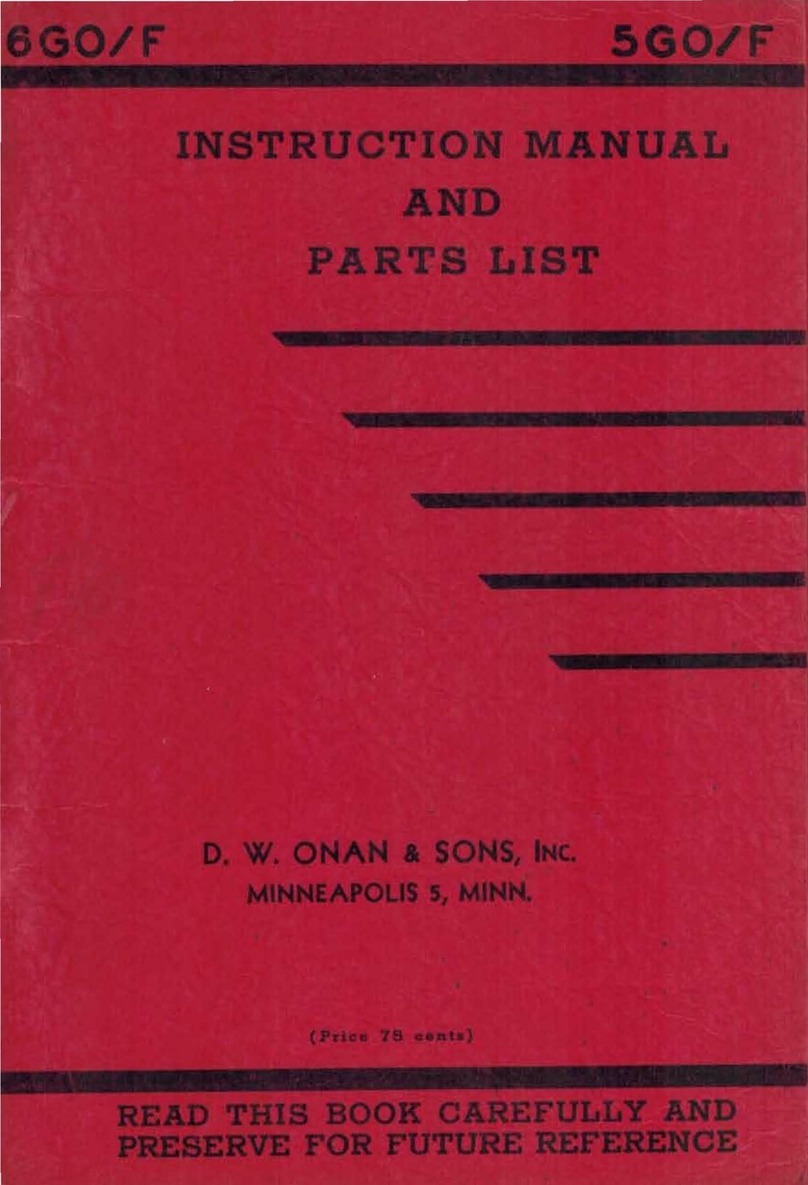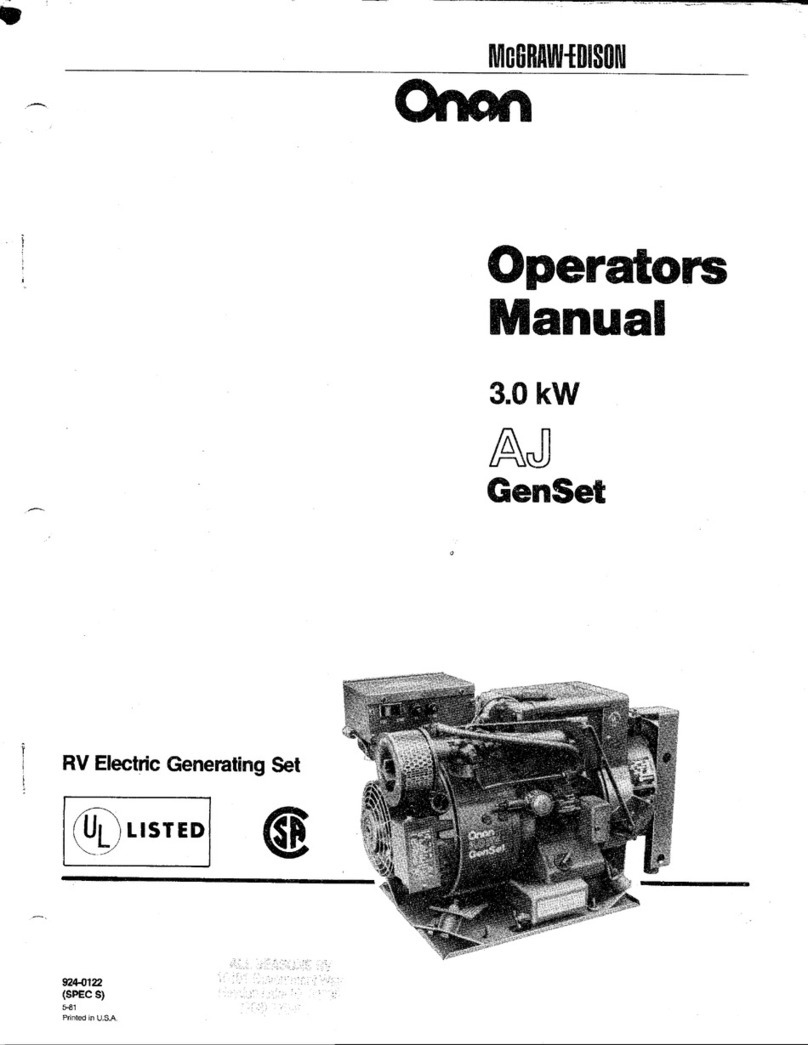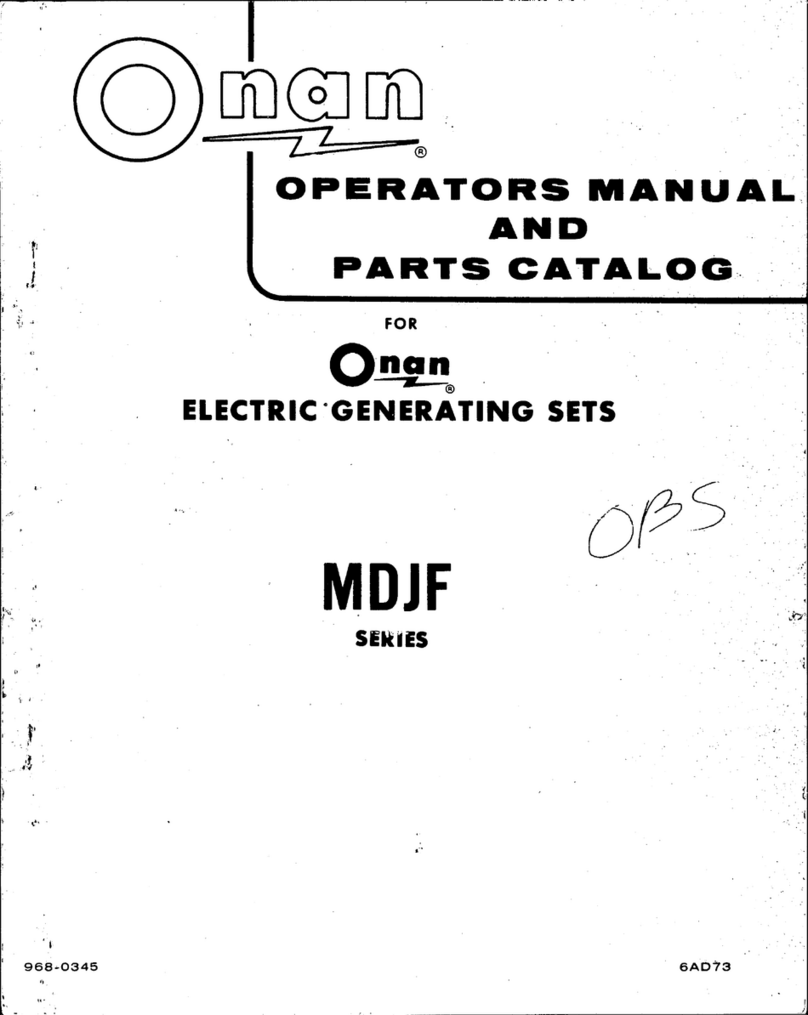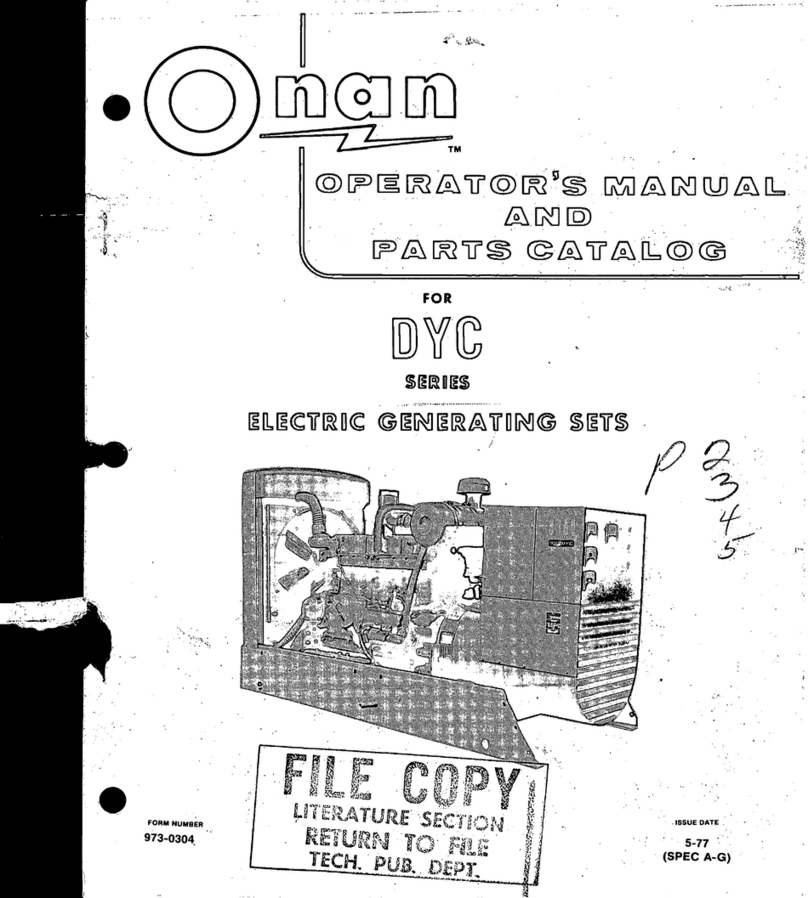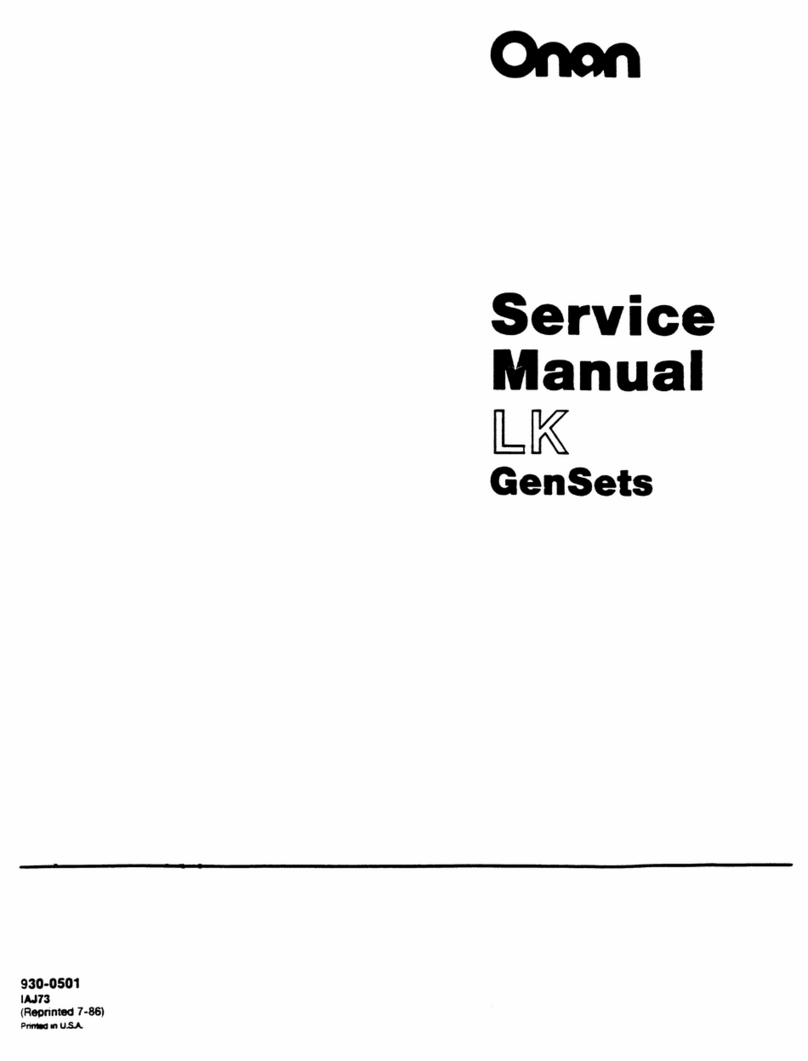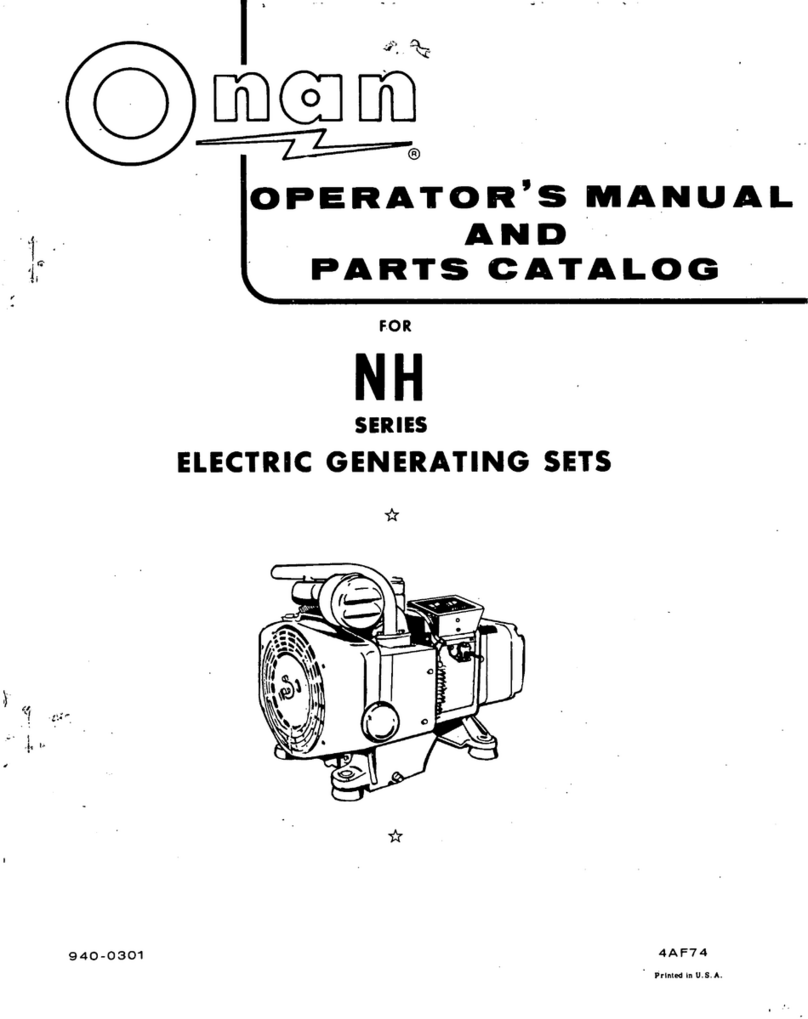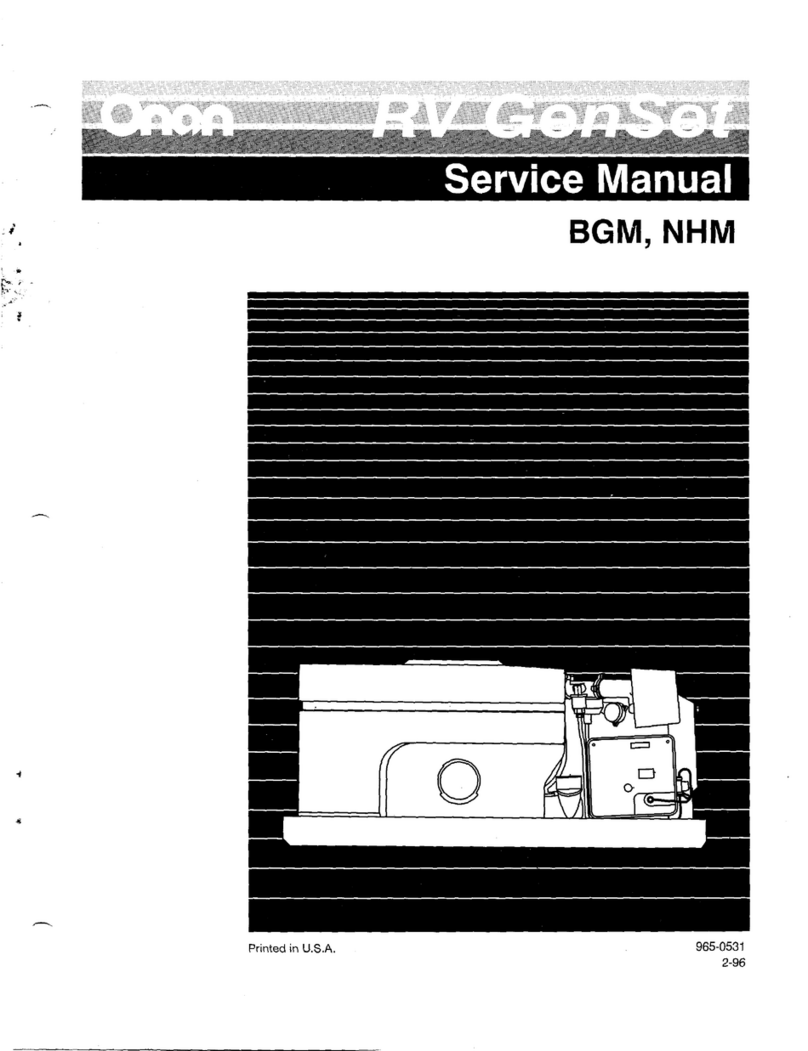
SafetyPrecautions
V,
Beforeoperatingthegeneratorset,readtheOperator'sMan-
ualandbecomefamiliarwithitandtheequipment.Safeand
efficientoperationcanbeachievedonlyiftheequipmentis
properlyoperatedandmaintained.Manyaccidentsare
causedbyfailuretofollowfundamentalrulesandprecautions.
Thefollowingsymbols,foundthroughoutthismanual,alert
youtopotentiallydangerousconditionstotheoperator,ser-
vicepersonnel,ortheequipment.
This symbol warns of immediate
hazards which will result in severe
personal injury or death.
A
DANGER
AWARNING
severe personal injury or death.
This symbol refers to a hazard or
unsafe practice which can result in
ACAUTION This symbol refers to a hazard or
unsafe practice which can result in
personal injury or product or property damage.
FUEL
AND
FUMES
ARE
FLAMMABLE.
Fire
andexplosion
can
result
from
improper
practices.
•DONOTfillfueltankswhileengineisrunning,unless
tanksareoutsidetheenginecompartment.Fuelcontact
withhotengineorexhaustisa potentialfirehazard.
•DONOTpermitanyflame,cigarette,pilotlight,spark,or
otherignitionsourcenearthegeneratorsetorfueltank.
•Fuellinesmustbeadequatelysecuredandfreeofleaks.
Fuelconnectionattheengineshouldbemadewithan
approvedflexibleline.Donotusecopperpipingon
flexi-
blelinesascopperwillbecomebrittleifcontinuously
vibratedorrepeatedlybent
•Besureallfuelsupplieshavea positiveshutoffvalve.
•Donotsmokewhileservicingleadacidbatteries.Lead
acidbatteriesemita highlyexplosivehydrogengasthat
canbeignitedbyelectricalarcingorbysmoking.
EXHAUST
GASES
ARE
DEADLY
•Provideanadequateexhaustsystemtoproperlyexpel
discharged
gases.
Visuallyandaudiblyinspecttheexhaust
dailyforleaksperthemaintenanceschedule.Ensurethat
exhaustmanifoldsaresecureandnot
warped.
Donotuse
exhaustgasestoheata compartment.
•Besurethe°unitiswellventilated.
MOVING
PARTS
CAN
CAUSE
SEVERE
PERSONAL
INJURY
OR
DEATH
•Keepyourhands,clothing,andjewelryawayfrommoving
parts.
•Beforestartingworkonthegeneratorset,disconnect
startingbatteries,negative(-)cablefirst.Thiswillprevent
accidentalstarting.
•Makesurethatfastenersonthegeneratorsetaresecure.
Tightensupportsandclamps,keepguardsinposition
overfans,drivebelts,etc.
•Donotwearlooseclothingorjewelryinthevicinityof
movingparts,orwhileworkingonelectricalequipment.
Looseclothingandjewelrycanbecomecaughtinmoving
parts.
Jewelrycanshortoutelectricalcontactsandcause
shockorburning.
•Ifadjustmentmustbemadewhiletheunitisrunning,use
extremecautionaroundhotmanifolds,movingparts,etc.
ELECTRICAL
SHOCK
CAN
CAUSE
SEVERE
PERSONAL
INJURY
OR
DEATH
•Removeelectricpowerbeforeremovingprotectiveshields
ortouchingelectricalequipment.Userubberinsulative
matsplacedondrywoodplatformsoverfloorsthatare
metalorconcretewhenaroundelectricalequipment.Do
notweardampclothing(particularlywetshoes)orallow
skinsurfacetobedampwhenhandlingelectrical
equipment.
•Useextremecautionwhenworkingonelectricalcompo-
nents.
Highvoltagescancauseinjuryordeath.DONOT
tamperwithinterlocks.
•Followallapplicablestateandlocalelectricalcodes.
Haveallelectricalinstallationsperformedbya qualified
licensedelectrician.Tagopenswitchestoavoidacciden-
talclosure.
•DONOTCONNECTGENERATORSETDIRECTLYTO
ANYBUILDINGELECTRICALSYSTEM.Hazardous
vol-
tagescanflowfromthegeneratorsetintotheutilityline.
Thiscreatesa potentialforelectrocutionorproperty
damage.Connectonlythroughanapprovedisolation
switchoranapprovedparallelingdevice.
GENERAL
SAFETY
PRECAUTIONS
•Coolantsunderpressurehavea higherboilingpointthan
water.DONOTopena radiatororheatexchangerpres-
surecapwhiletheengineisrunning.Allowthegenerator
settocoolandbleedthesystempressurefirst.
•Provideappropriatefireextinguishersandinstallthemin
convenientlocations.Consultthelocalfiredepartmentfor
thecorrecttypeofextinguishertouse.Donotusefoamon
•>electricalfires.UseextinguishersratedABCbyNFPA.
•Makesurethatragsarenotleftonorneartheengine.
•Removeallunnecessarygreaseandoilfromtheunit.
Accumulatedgreaseandoilcancauseoverheatingand
enginedamagewhichpresenta potentialfirehazard.
•Keepthegeneratorsetandthesurroundingareaclean
andfreefromobstructions.Removeanydebrisfromthe
setandkeepthefloorcleananddry.
•Donotworkonthisequipmentwhenmentallyorphysi-
cally
fatigued,
orafterconsuminganyalcoholordrugthat
makestheoperationofequipmentunsafe.
LS-8

